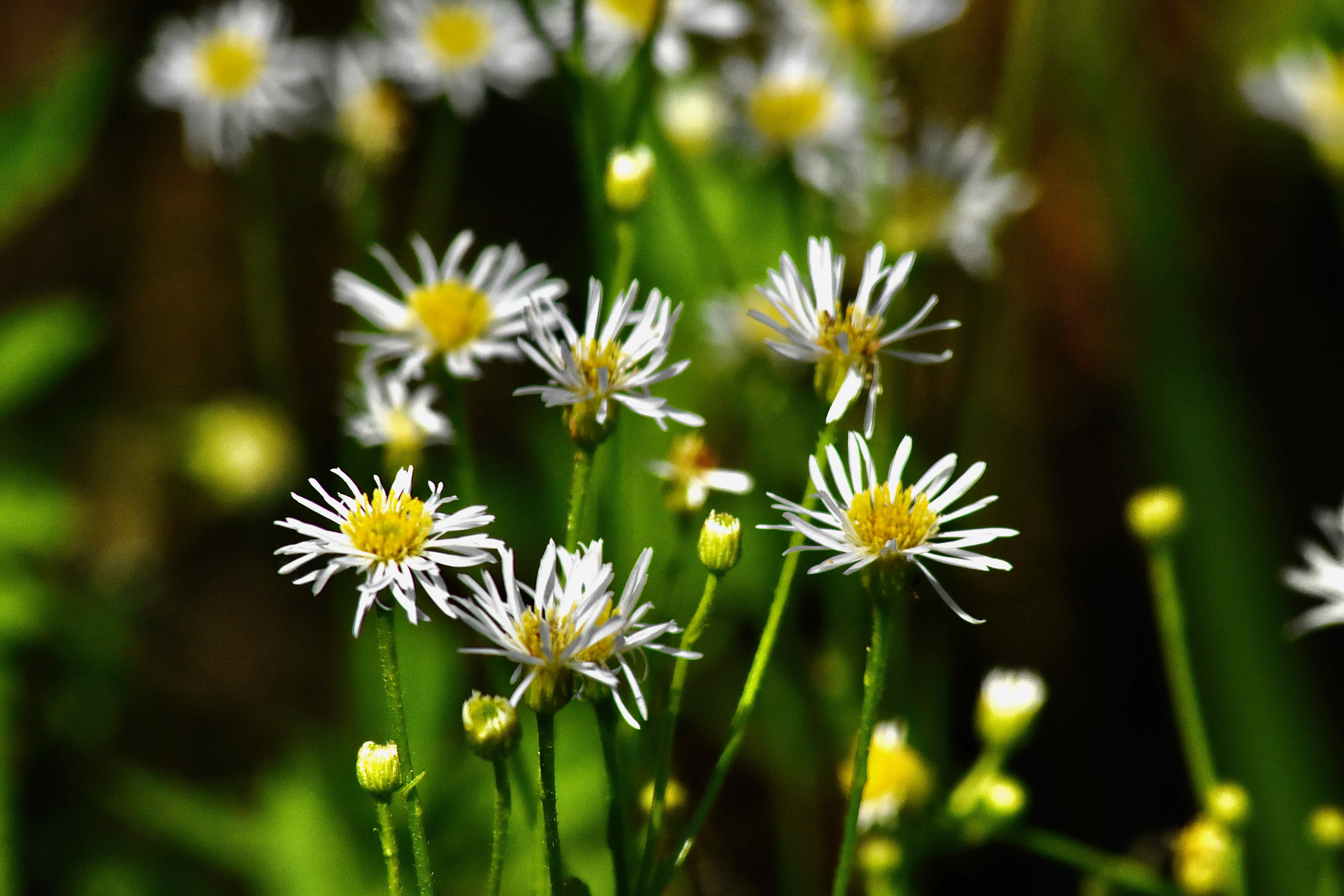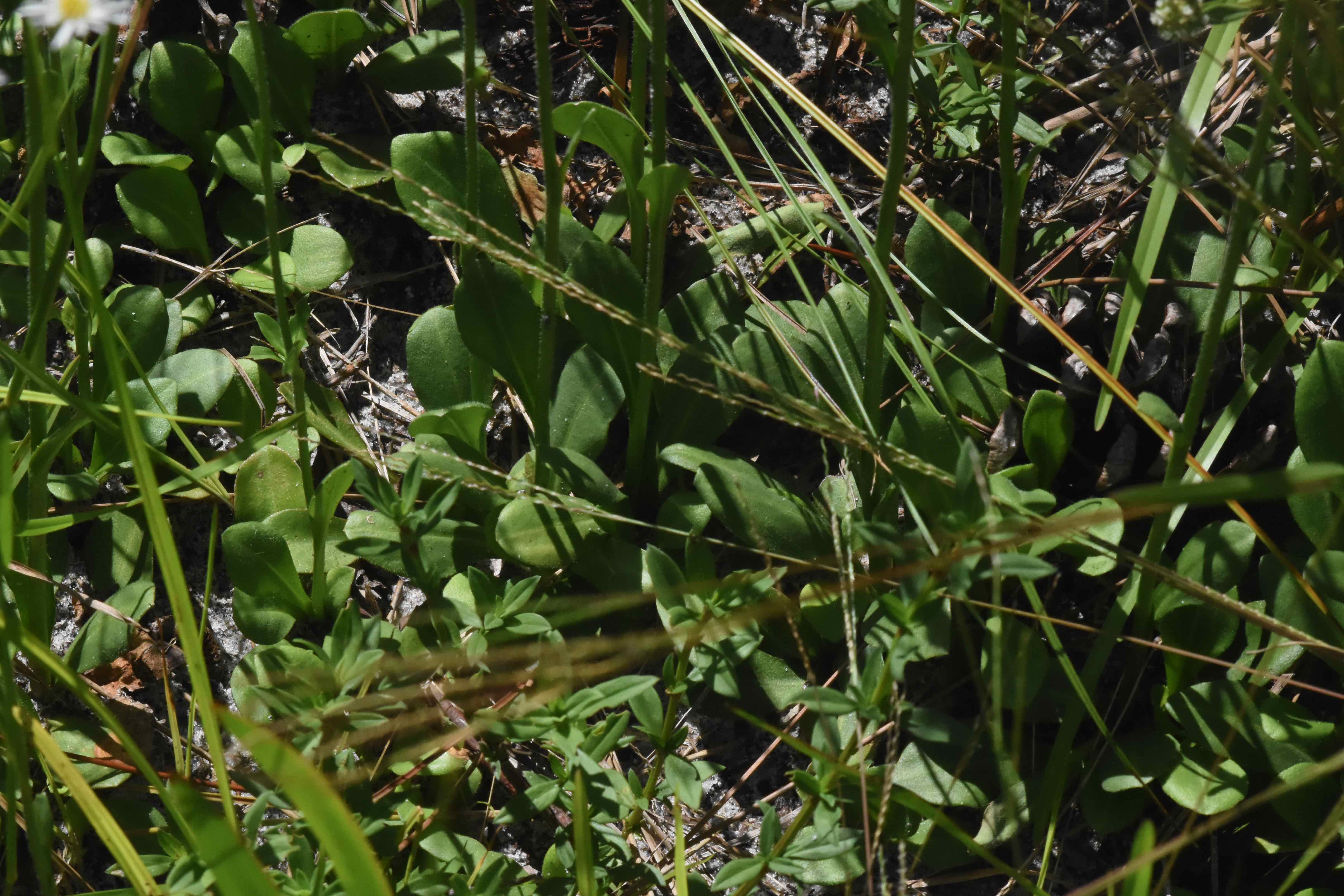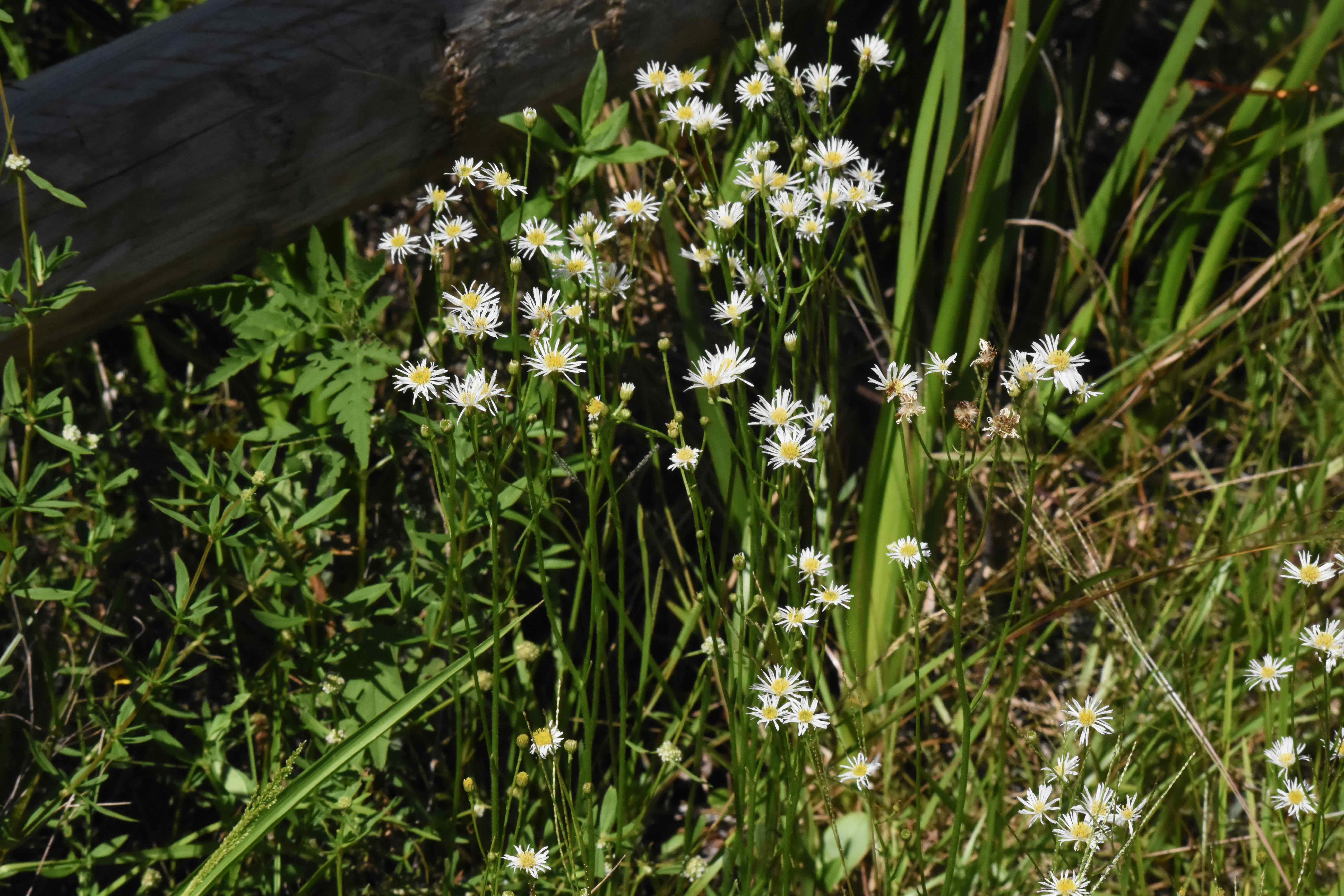
Early whitetop fleabane, photographed at Acreage Pines Natural Area, Loxahatchee, Palm Beach County, in July 2016.
This is one case where a plant's common name makes complete sense. Early whitetop fleabane, Erigeron vernus, gets the name because it tends to bloom earlier than other fleabanes, including its more abundant cousin, southern fleabane. Even its scientific name, vernus, from the vernal, or spring, equinox, reflects its habit of flowering early.
Early whitetop fleabane is a Florida native, found throughout almost all of the Sunshine State as far south as Miami-Dade County. It's also found throughout the southeastern United States along the coastal plain that stretches from Virginia to Louisiana. Early whitetop fleabane likes moist habitats, including flat pinewoods, savannas, roadsides and near bodies of water.
It is similar to southern fleabane (also known as oakleaf fleabane) in many ways, but there are key differences that make it easy to tell the two apart. Both fleabanes have similar distributions and habitats. Early whitetop tends to grow much taller than southern, typically reaching 10 to 20 inches off the ground when in bloom. Both have daisy-like flowers, but whitetop's are larger and their white rays are looser, less compact than southern.
The leaves of both fleabanes grow in clusters near the ground in what are technically called basal rosettes. The leaves of the two are much different in shape, making it easy to distinguish them even when they're not in bloom. Whitetop leaves are oval-shaped, a little on the thick, or succulent, side. Those of southern fleabane resemble oak leaves.
The Institute for Regional Conservation in Delray Beach says early whitetop fleabane is rare in South Florida, but it's common elsewhere in Florida and in most of range. It is however, imperiled in Virginia, where it's confined to a few counties in the commonwealth's southeastern corner. It's also found in the District of Columbia, the northern most point of its range.
Early whitetop fleabane generally is not generally cultivated or sold commercially, but does grow easily from seed.
A note about the Erigeron genus. According to South Florida naturalist Roger Hammer, the name means woolly, or old man, in Greek, and refers to the appearance of some of its members. Commonly, they're called fleabanes, because the leaves are used to repel the tiny pests. In some cases, the leaves are included in bedding; with others, including early whitetops, they're burned, with the smoke becoming the repelling agent. Some Erigerons were used in herbal medicine to make something called oil of erigeron, but our guy wasn't one of them. Nor can we find any medicinal uses for early whitetop. The Florida Geological Survey once said the only thing early whitetop (along with a long list of similar plants) was good for was as "pasturage."
Other common names and spellings for early whitetop fleabane include vernal erigeron, spring fleabane, aster vernus and early white-top fleabane. It is a member of Asteraceae, the family of sunflowers and daisies.
Click on photo for larger image
Links for Early Whitetop Fleabane



